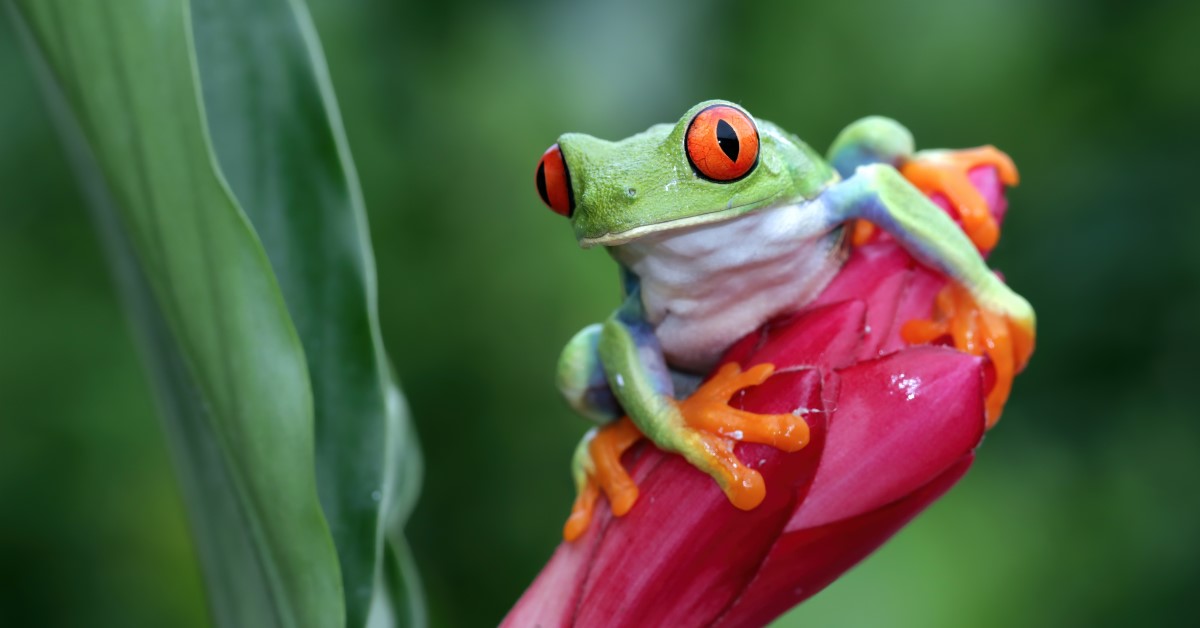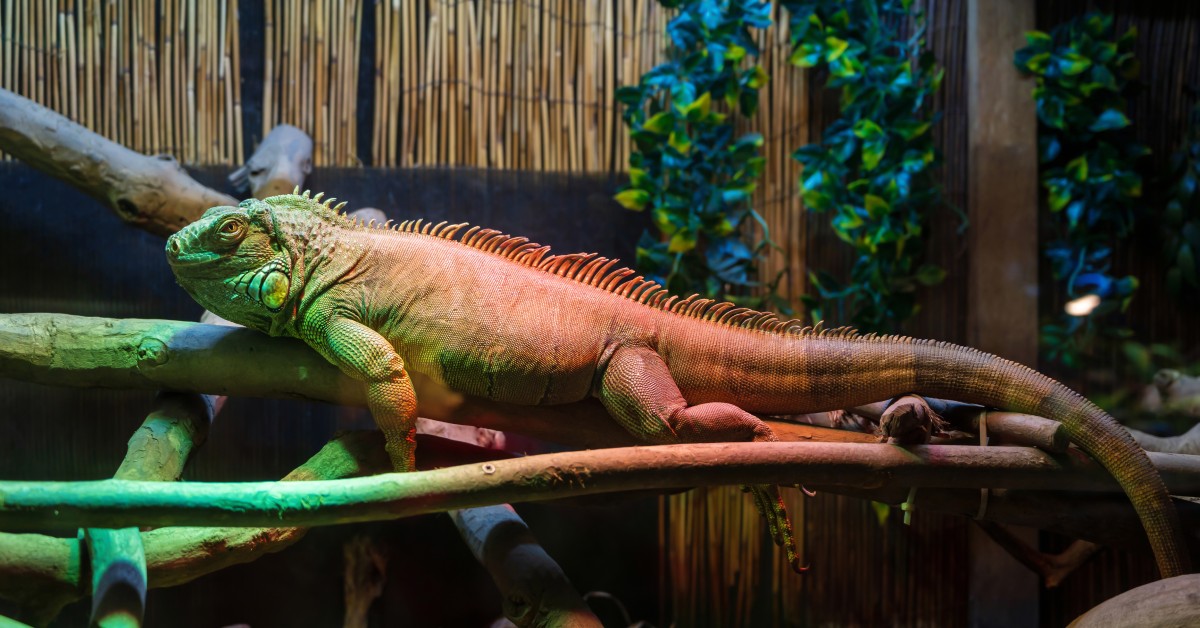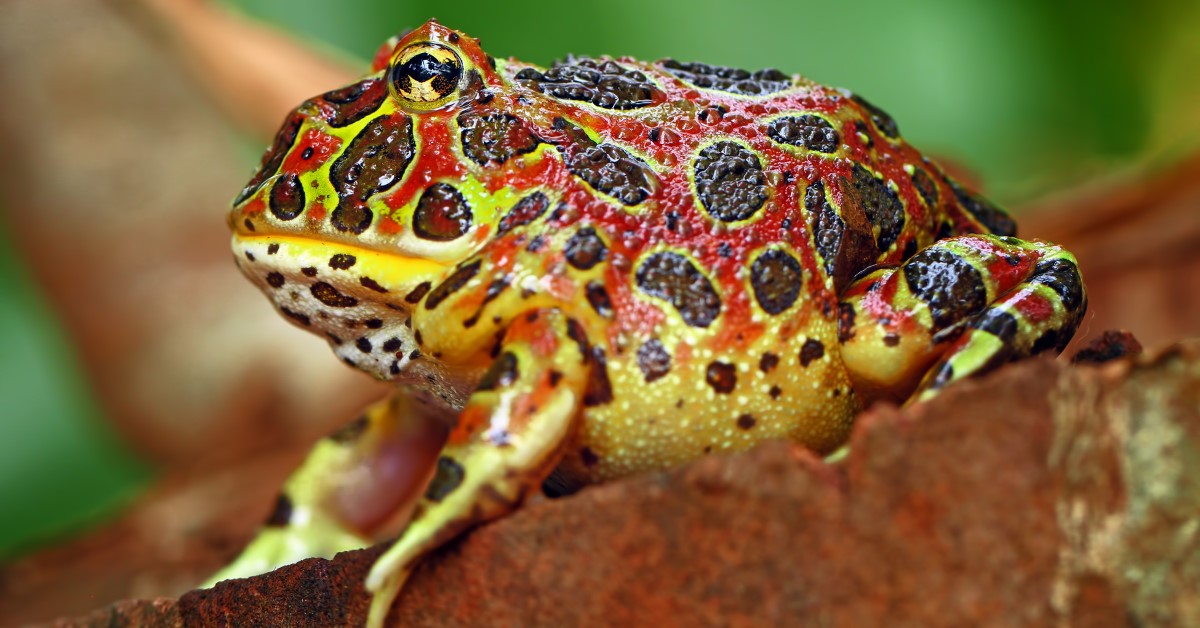What Can I Feed My Pet Frog?
Your new pet frog can't live on just any food you have handy. But once you understand its dietary and nutritional needs, you can help your amphibian friend thrive.

Frogs make fascinating pets. Whether you choose to raise a dart frog, milk frog, or African bullfrog as your own, you'll appreciate the unique beauty of these amphibians. Once you bring your new friend home, however, you may wonder what in the world to feed it. Instead of taking wild guesses that could easily do more harm than good, take a moment to digest this introductory guide on what to feed your frog.
Different Foods for Different Frogs
Frogs mainly feast on insects, but that preference doesn't make them insectivores. They technically count as carnivores because they will also eat worms and other small creatures. Ideally, a balanced frog diet includes a variety of foods to ensure an optimal mix of nutrients.
The staple foods of wild frogs include:
- Crickets
- Ants
- Butterflies
- Moths
- Snails
- Slugs
- Grasshoppers
- Earthworms
Pet frogs enjoy many of the same insects and do well with many kinds of worms, such as mealworms, earthworms, waxworms, and hornworms. Aquatic frogs will eat bloodworms, brine shrimp, and minnows. Larger frogs will also eat small rodents. In domestic environments, this usually means baby mice or small-breed mice.
Best Foods for Baby Frogs
Baby frogs subsist on a limited diet compared to their adult counterparts. You can safely feed your baby frog:
- Bloodworms
- Wingless fruit flies
- Brine shrimp
- Pinhead crickets
- Redworms
Where Can I Buy Frog Food?
You can find good food sources for both baby frogs and adult frogs at your local pet store or bait shop. You may even choose to raise food for your frogs at home so you'll always have a sustainable supply on hand. Just don't feed them wild-caught or dead prey. Because frogs tend to ignore non-moving food sources, they may not even recognize dead prey as a meal. Wild-caught prey may contain parasites or disease organisms harmful to your frog.
One thing all types of frogs have in common is their inability to thrive on human foods. Never feed your frog table scraps, fruits, vegetables, or chunks or raw or cooked meat. These menu items can cause everything from severe malnutrition and intestinal blockages to food poisoning.
Bear in mind that while you might persuade your pet to eat pelleted tortoise or frog food, frogs generally save their appetites for live creatures. Before you purchase a Pacman frog or other large breed that thrives on small mice, be honest with yourself about your comfort level when it comes to serving up these live creatures. If you feel too squeamish to feed live mice to your frog, ask the pet store staff to point you toward a frog that can live happily on worms and insects instead.
A Typical Frog Feeding Routine
Like many other members of the animal kingdom, frogs have varying caloric requirements. Baby frogs and small-breed frogs tend to expend more energy than larger frogs. You should feed your baby frog a couple of times per day, while small to medium-sized frogs only need to eat every other day once they reach adulthood. Large adult frogs can go up to three days without eating, but they tend to eat more per meal than smaller frogs.
The insects you feed your frogs probably won't provide optimal nutrition on their own. You'll need to fortify their nutritional value by using the following methods:
- Dusting - You can purchase nutritional powder rich in the essential vitamins and calcium frogs need. Simply shake the powder over the insects until they're coated before feeding them to your frog.
- Gut loading - This method involves increasing the insects' nutritional value by feeding them a special mix of vitamins and minerals. Perform this routine within 72 hours of your frog's scheduled meal time for best results.
Frogs may have large mouths, but they still have their limits when it comes to the size of their food portions. To avoid choking or gut impaction, the prey you feed your frog should not be longer than the distance between your frog's eyes. Instead of taking your pet frog out of its comfortable, familiar environment at feeding time, offer "room service" by delivering the prey to your frog's enclosure.
A typical, medium-sized adult frog can eat about five insects at a time -- but that doesn't mean you should dump them all into your frog's enclosure at once or let it eat for unlimited periods. Feed your frog one insect at a time, moving onto the next one only after the frog has consumed the previous one. Limit the feeding window to 20 minutes or less, removing any uneaten prey at the end of the meal. If your frog seems to have lost its appetite, you may need to take it to the vet for evaluation.
Don't Forget the Water
Frogs need water as well as food, but take care with the kind of water you provide. Ordinary tap water usually contains chemicals such as fluoride and chlorine which can harm or kill frogs. Even bottled spring water can prove less than ideal. Ask your veterinarian whether you should use reverse osmosis or aquarium treatment products to pre-treat the bottled spring water.
Give Your Frog What It Needs to Thrive
Your frog can have a happy, healthy life once you know how to give it the nutrients it needs in forms it will accept. Consult a veterinarian experienced in exotic animals for more information and guidance.
Ready to start saving money on pet wellness care?
Then take a look at Mint Wellness, the pet wellness plan that provides fast reimbursement on routine pet care. Save on vaccinations, wellness exams, preventatives, dental, and more!
Learn More


